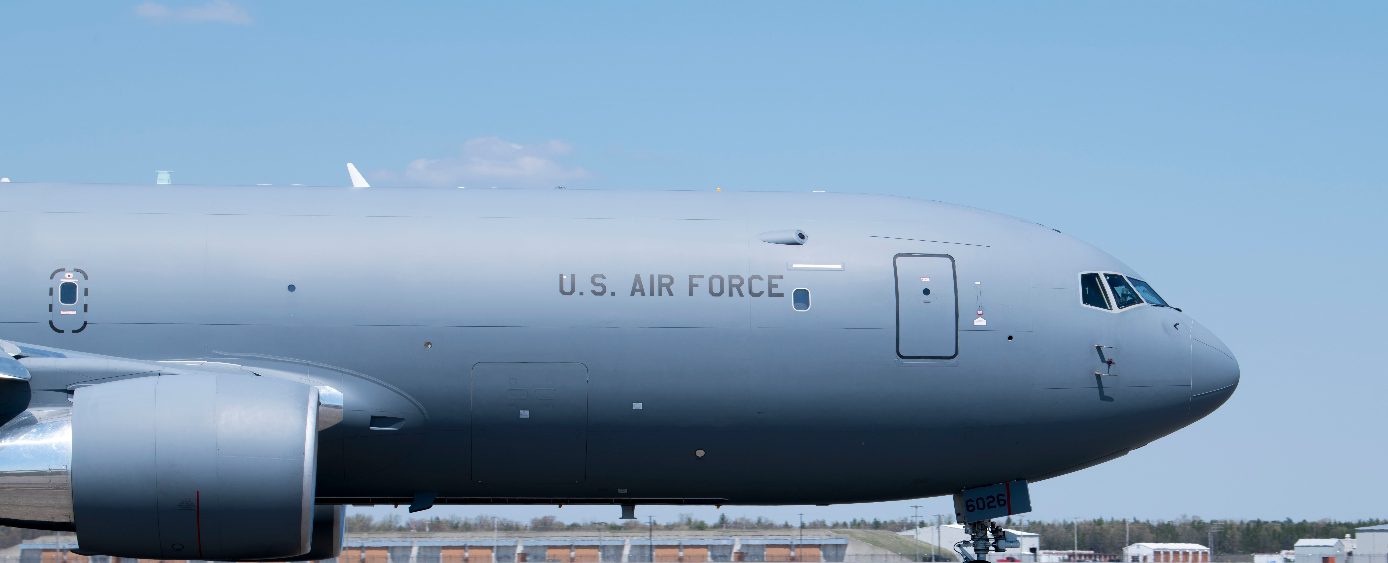USAF Outlines Next-Gen Mobility Goals In Short Notice Solicitations

KC-46
The U.S. Air Force wants to start developing the requirements for its future refueling tankers and airlifters, and is giving industry less than two weeks to provide its input ahead of a March deadline for long-term budget planning.
The service on Dec. 31 released the first three requests for information (RFI) on what it is calling “Cross-Cutting Operational Enablers”—three mission areas that need investment starting in the fiscal 2024 five-year budget plan. The three missions are mobility, electromagnetic spectrum of operations, and munitions.
Under the mobility umbrella, the Air Force released preliminary requirements for what it wants in its next-generation aerial refueling tanker, airlifter and mission generation systems. The Dec. 31 RFI has a deadline of Jan. 11 for immediate input, ahead of a March 2023 deadline for recommendations to Air Force Secretary Frank Kendall to be included in the five-year program objective memorandum.
“One of the things we’re doing this year is to take a look at the whole mobility equation,” Kendall told Aerospace DAILY last month before the solicitations were released. “One of the problems we’re confronting is the threat keeps trying to reach out to farther range to engage us. Now they’re out at ranges where we’ve got to worry about the survivability of tankers and transport aircraft … so we’re looking at that problem arc now, and we’re very wide-open aperture.”
The air refueling RFI highlights shortfalls in the current Boeing KC-46 and KC-135 fleet, looking at long-term investments in autonomy and data connectivity.
“Current and future tankers will be required to effectively command, control, and communicate globally, navigate accurately in degraded environments, and perform at a high operations tempo in contested environments,” the document says.
Specifically, the Air Force wants a “Team of Systems” that can provide resilient line-of-sight and beyond-line-of-sight connectivity, with open architecture designs and position, navigation and timing options. Future tankers need increased situational awareness with onboard electronic warfare/electronic attack, and be able to work with off-board autonomous platforms.
“Aerial refueling platforms must incorporate broad operational enhancement and survivability capabilities, such as connectivity/interoperability, real-time situational awareness (SA), and self-protection to meet future operational plan (OPLAN) and National Military Strategy requirements,” the RFI says. “Employing a Next Generation Air Refueling and Aerial Support Team of Systems (ToS) approach enables near-term operational capability solutions to be incorporated into the current tanker fleet at the earliest opportunity, and identifies potential solutions that require further investment, development, and technology maturation.”
Minimum requirements for this system include semi-autonomous and autonomous refueling capabilities as both the tanker and receiver, multiple refueling configurations, survivability and kinetic and non-kinetic threats, real-time situational awareness of friendly and enemy forces, data sharing and connectivity to both coalition and joint forces, the redacted RFI says.
Another RFI focusing on airlift highlights capability gaps in the current fleet of Boeing C-17s and Lockheed Martin C-5s and C-130s. These include an inability to sustain a joint force at the speed and scale needed, burnout of legacy aircraft, an inability to work with future communication capabilities and dependency on fixed infrastructure for support.
At a minimum, the service wants upgrades to existing aircraft or new aircraft with survivability against kinetic and non-kinetic threats, real-time situational and threat awareness, improved connectivity, streamlined cargo production and validation, autonomous or semi-autonomous ground operations, a self-contained rapid offload capability and ways to maximize cargo volume.
Future airlifters also need to have improved survivability with onboard electronic warfare and electronic attack, along with the ability to operate with off-board collaborative uncrewed systems.
“These … capabilities should provide agility: facilitating/expediting quick-turn operations, improved fuel and cargo efficiency, improved maintenance procedures, improved airfield access, as well as reduced maintenance and logistics support requirements,” the RFI says.
A third solicitation, also released Dec. 31 with a deadline of Jan. 11, seeks industry input on how mobility crews could support operations in contested environments. This includes new ways to provide connectivity; receive, launch and service aircraft; verify and survey airfields; inspect joint cargo; integrate operations from within and beyond a theater of operations; and planning, coordinating, executing and assessing mobility operations.
“Agile footprints and operations will define future [mission generations], where in order to guarantee survivability mobility support forces will have to operate in a distributed manner and then converge in very limited windows of opportunity to execute mission tasks,” the RFI says.
The three new mission areas are in addition to the seven “operational imperatives” that Kendall laid out last year, which largely drove planning for the upcoming fiscal 2024 budget request expected in the coming months.
Kendall in December said the service had already started on its fiscal 2025 budget plans, outlining to the Pentagon’s Cost Assessment & Program Evaluation office what its top priorities are for spending in that time frame.

Comments